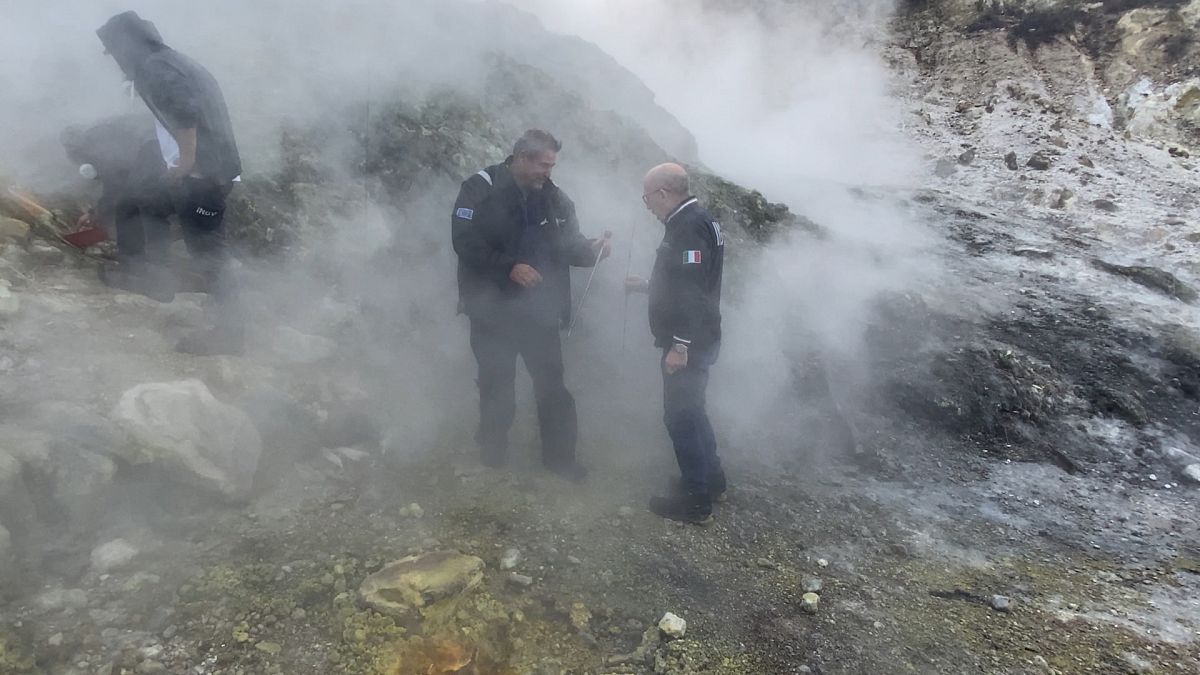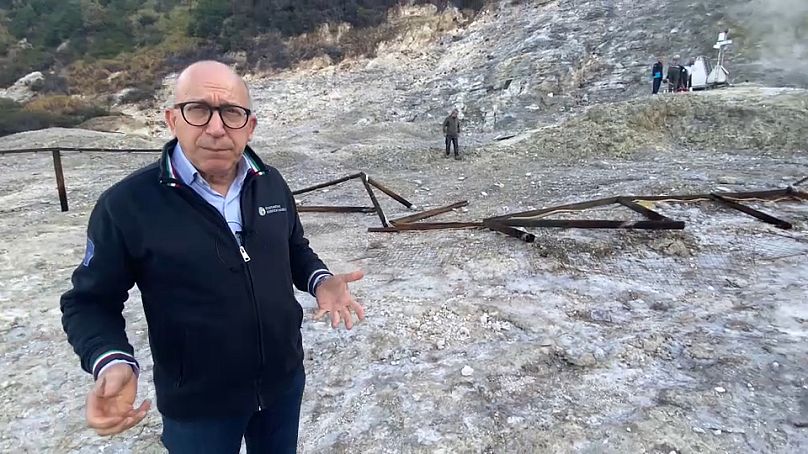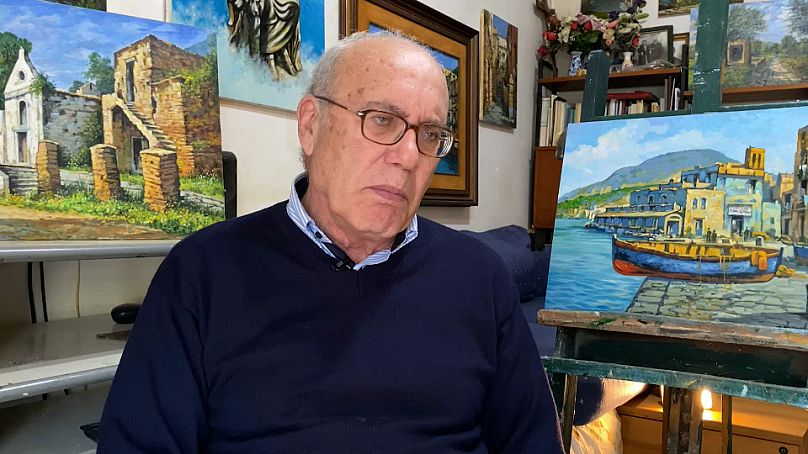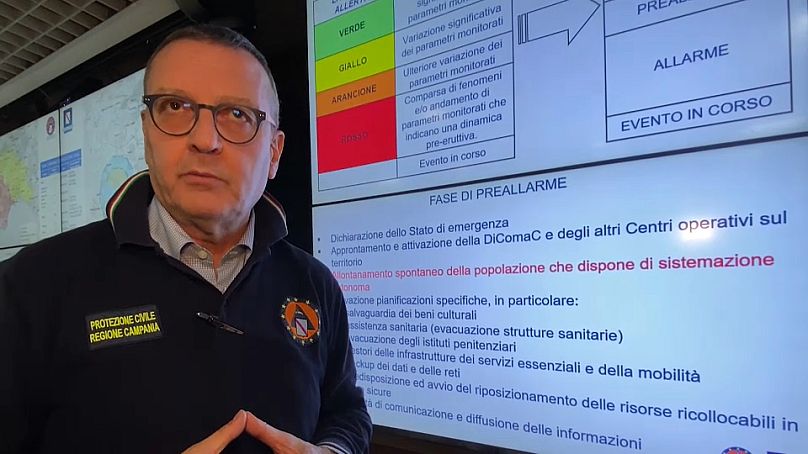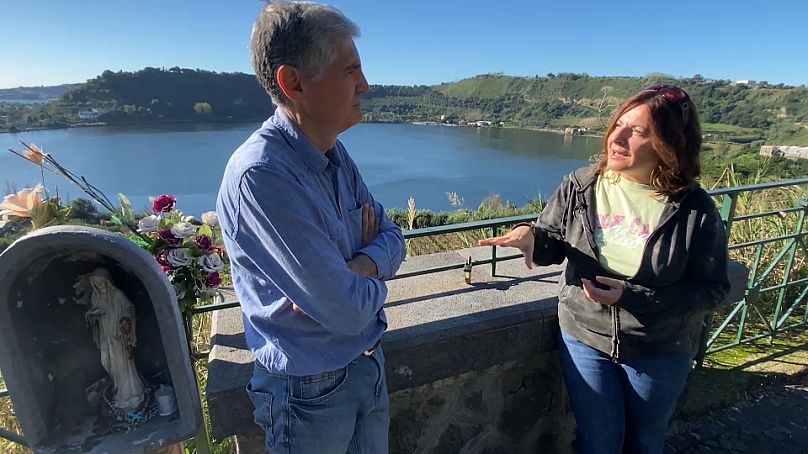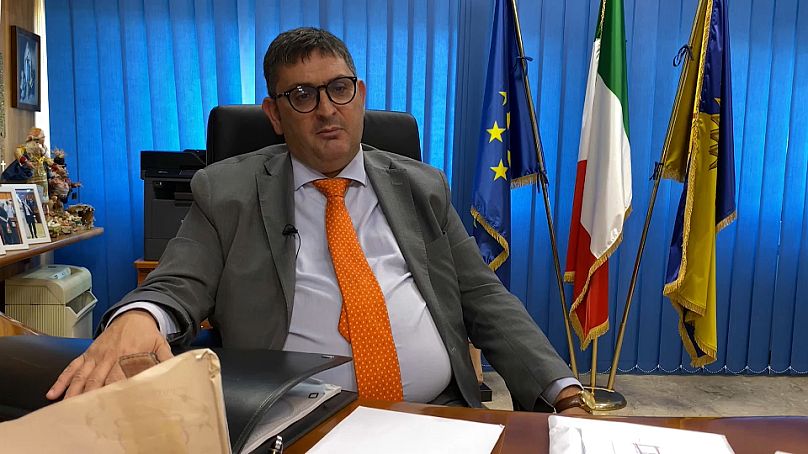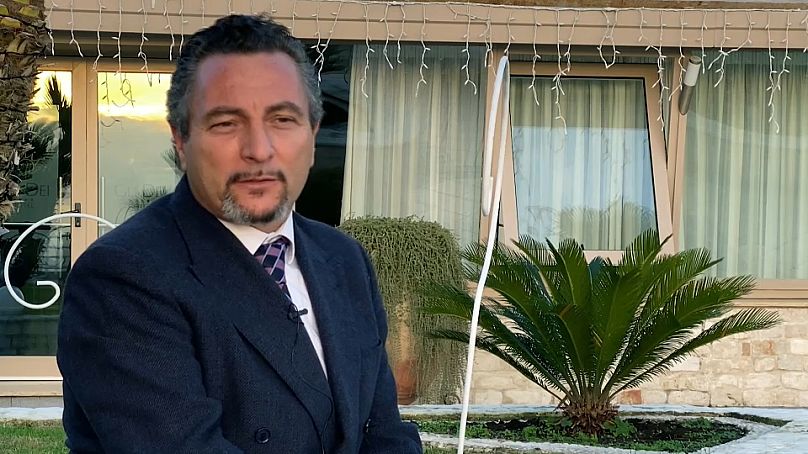In southern Italy, several hundred thousand people live in a volcanic caldera that has seen a recent uptick in seismic activity. Residents are torn between concern and resignation, while the authorities are keeping a close eye on the situation.
I'm near Naples, Mount Vesuvius and Pompeii, in the far lesser-known Italian city of Pozzuoli which lies on a huge magma caldera which, over millennia, has created a volcanic landscape known as Campi Flegrei. Lately, this volatile geology has triggered thousands of small earthquakes.
I'm invited to follow scientists at the Vesuvius Observatory from the Italian Institute of Geophysics and Vulcanology as they monitor activity inside a crater whose gas emissions seem particularly intense.
"In these areas, gas emissions are coming from deep below ground," says Mauro Antonio Di Vito, the Institute's director, as we walk around the fumaroles (vents in the surface of the Earth where hot volcanic gases and vapours are emitted).
"Observing and understanding how these emissions change over time is important to characterise what is happening deep down at the magma chamber," he adds.
Real-time data from gas emissions, seismic activity, and soil and air temperatures are monitored 24 hours a day from a huge control room in the Institute's headquarters.
"In September, we had more than 1000 earthquakes in a month. Of course, most earthquakes are very low magnitude, with a few that reached magnitudes 3.8, 4.0 or even 4.2. Now the process has slowed down. But we know that this can change. All we can do is continue to monitor the area with the utmost attention," Mauro Antonio Di Vito explains.
'We are almost used to this phenomenon, it has become our friend,' say locals
Residents here seem accustomed to these uncertainties. Historically prone to eruptions, the area also displays a geological feature known as 'bradyseism'. Pushed by magma and gases, the soil moves up and down as if it's breathing. Sometimes, these movements result in potentially dangerous tremors for buildings and people.
One of Pozzuoli's neighbourhoods was evacuated in 1970 during one such shock. It has since been partially rebuilt, but nobody lives here anymore.
Local painter, Antonio Isabettini, agrees to show me around. He was just a teenager when his family was evacuated from the area.
"3000 people lived here, and they were evicted over a period of two days. I remember there was great confusion, that's for sure, because, from morning to evening, we found ourselves surrounded by the army, buses and police forces," Antionio reveals.
Now aged 68, Antonio still paints the volcanic landscapes that have defined and defied his whole life.
"We've listened to the tremors. We've felt them. We say we are almost used to this phenomenon, it has become our friend," he says standing in front of one of his volcanic landscape paintings. "The important thing is that it doesn't hurt us. But I'm certain that it will never hurt us."
'New generations of people tend to forget they're living on a volcano'
But beyond wishful thinking, is the densely populated area prepared should the situation worsen? I put the question to the region's Civil Protection, which oversees the safety of the 1.5 million people who are potentially at risk.
Evacuation plans for volcanic activity have been in place for years. Now a specific plan for bradyseism is also being developed, says Italo Giulivo, the Campania Region Civil Protection's director.
The capacity of essential services and transport infrastructures is being assessed, and communication strategies outlined, explains Giulivo.
"The fact that the last eruption here was in 1538 means that new generations of people tend to forget they're living on a volcano. This lowers the perception of risk. We don't want to reassure the population, we want to let them know what the problem is so that they are aware of it", he explains.
'You can only really deal with it if you are well prepared'
Whether they are anxious or untroubled by the recent earthquakes, residents are calling for accurate scientific assessments, detailed risk mitigation actions, workable evacuation plans and clear communication guidelines.
Anna Peluso, a mother of two, shares Facebook updates on the area's capricious geology. Tremors have forced her son's school to be evacuated three times since September.
"Volcanic risk is something you can anticipate. It gives you signals and you can deal with it. But you can only really deal with it if you are well prepared. My group's motto is 'Estote Parati', which is Latin for, 'Be ready'.
"There are many people who don't show any interest in the phenomenon. People know what time Napoli's football team are playing tomorrow, but they don't even know where their evacuation meeting point is."
Along with evacuation plans, the area faces another pressing issue: taking care of buildings that are starting to show clear signs of fragility. To understand what is at stake, I meet the Mayor of Pozzuoli, Luigi Manzoni.
New constructions are forbidden and public buildings have been reinforced, the mayor claims. Local authorities can't directly assist private owners, he says, but a recent national decree should help evaluate the number, distribution and state of fragile residences.
"This decree allows us to make a vulnerability assessment on buildings located within parts of the bradyseism zone. In total, there are some 15,000 buildings concerned, of which approximately 9,500 are in the city of Pozzuoli, 2,000 in Bacoli and 3,000 in Naples," Manzoni says.
Tourism industry fears 'destructive' impact of a raised alert level
In the capital city of Rome, authorities recently discussed eventually increasing the alert level, from the current low-risk yellow warning to the far more restrictive orange warning.
The move was eventually dismissed, to the relief of the tourism and service sectors.
Increasing the alert level without unquestionable scientific justification would bring the region back to a COVID-19-style standstill, Gennaro Martusciello, the vice president of the Local Association of Hotel Managers tells me as we meet at his four-star hotel.
"An orange zone would mean that only those who work or live within the city limits can enter. In other words, it would mean the destruction of tourist activity. How can you visit a city without being allowed in or out? Our sector employs almost 50,000 people, so it would truly be a major disaster."
Residents say they hope experts and authorities will make the right decision - whatever that may be.
"I think we can sleep soundly," says Antonio Isabettini in front of the beautiful Italian seafront.
"We live in symbiosis with this natural phenomenon. It's true that it does cause some concern, but on the other hand, we consider ourselves lucky to live in one of the most beautiful places in the world, full of history, full of legends...," he concludes.
